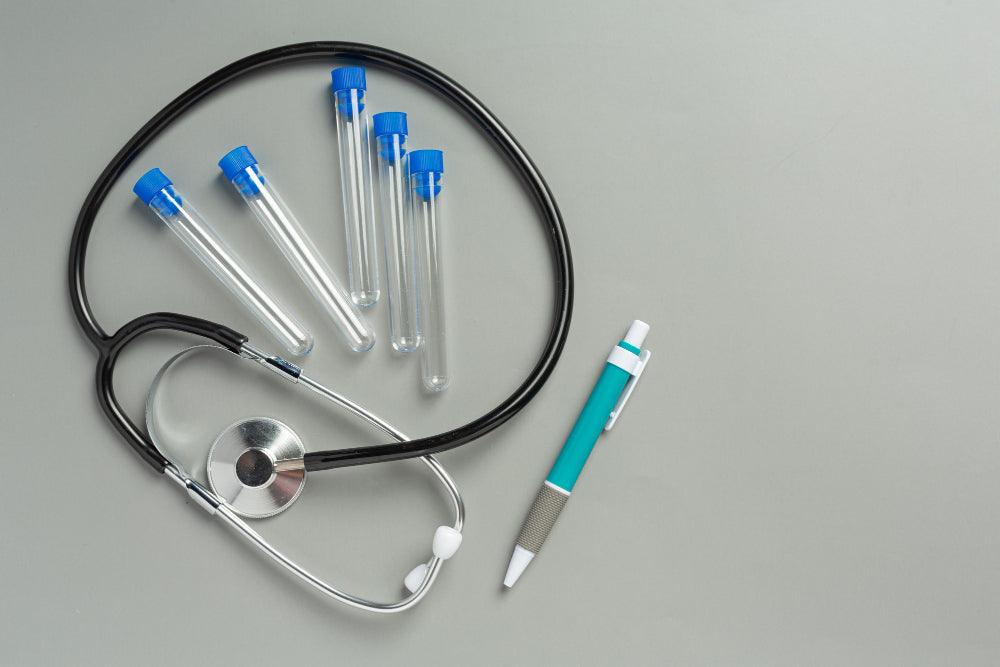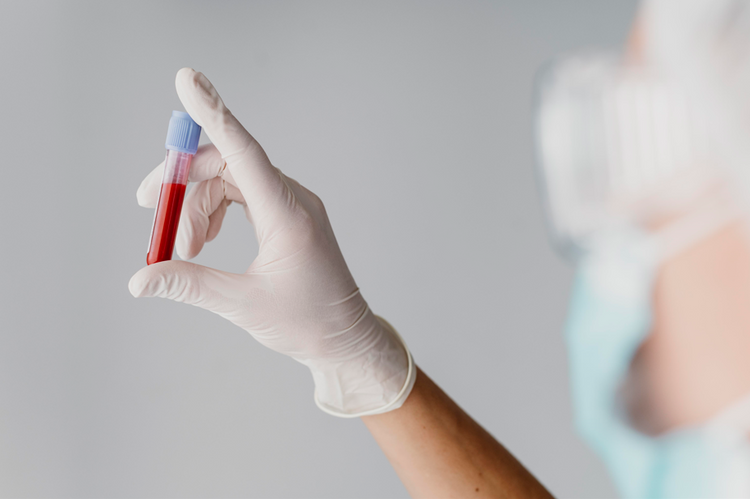What is Serum Gamma GT level?


Related products
The liver plays a fundamental role in regulating metabolic functions, processing hormones, detoxifying the blood, and supporting digestion. As such, any compromise in liver function can affect multiple systems in the body. Liver function tests are essential tools in preventive and diagnostic healthcare. Among the most significant of these is the gamma-glutamyl transferase (GGT) test, which helps identify early signs of liver stress or bile duct obstruction. For added convenience, many people are now turning to Home Blood Tests, which allow you to monitor your health from the comfort of your home. These tests are easy to use, come with clear instructions, and cover a wide range of health concerns.
GGT is a valuable marker not only for diagnosing liver disease but also for monitoring alcohol use, assessing medication side effects, and distinguishing liver-related enzyme changes from those caused by other conditions such as bone disease. Regular testing is especially beneficial for individuals with chronic health conditions, those taking long-term medication, or anyone adopting a proactive approach to health. Comprehensive panels like the Full Body MOT Health Check often include liver enzymes such as GGT, providing a complete view of organ health in one assessment.
What is GGT?
Gamma-glutamyl transferase (GGT) is an enzyme primarily produced in the liver, but it is also found in the pancreas, kidneys, and other tissues. GGT is involved in the transfer of amino acids and peptides across the cellular membrane, playing a role in protein metabolism and antioxidant defence through the glutathione cycle.
While GGT’s exact physiological roles are still being studied, it is known to be integral to the metabolism of drugs, toxins, and alcohol, making it a critical enzyme for understanding liver detoxification function. It also assists in identifying issues with bile ducts and can help detect bile flow obstruction, which often precedes liver damage.
The GGT test is performed via a routine blood draw, where a healthcare professional collects a sample to evaluate enzyme levels. A high level in your serum can indicate liver cell damage, and when paired with other enzyme tests like alkaline phosphatase (ALP) or alanine aminotransferase (ALT), it provides a more complete picture of liver health.
The role of the liver and why enzyme monitoring matters
The liver is the body’s central chemical processing plant—it metabolises nutrients, detoxifies the blood, produces bile for digestion, and stores essential vitamins and minerals. With over 500 documented functions, this organ is constantly at work to keep you healthy. Because of this, even small disruptions to liver function can have wide-ranging consequences on your overall health.
Liver enzymes, including gamma-glutamyl transferase (GGT), act as early indicators of liver stress or damage. These enzymes usually remain inside liver cells. When liver cells are injured, the enzymes leak into the bloodstream, signalling something is wrong. GGT, in particular, is often elevated in conditions that interfere with bile flow or cause liver inflammation.
Routine enzyme monitoring is especially critical for individuals with high-risk profiles, such as those who consume alcohol regularly, take medications metabolised by the liver (e.g. anti-epileptics, statins), have chronic illnesses like diabetes, obesity, or high cholesterol, or have a family history of liver disease.
For example, the Cholesterol Blood Test is often recommended alongside liver function tests, especially in those managing cardiovascular risk, as poor lipid metabolism can also affect liver health.
The goal is to catch liver dysfunction early—before symptoms like jaundice, fatigue, or abdominal pain develop. GGT and other enzyme levels provide a non-invasive, early warning system that can trigger timely intervention.
Understanding the GGT test procedure and what to expect
The GGT test is a simple and quick blood test, typically performed in a clinic, diagnostic lab, or increasingly through at-home testing kits. The procedure involves collecting a blood sample from a vein, usually in the arm. The process takes just a few minutes and does not require fasting, although your doctor may recommend it depending on other tests being performed simultaneously.
Once collected, the blood sample is processed to separate the serum—the liquid component of blood that contains enzymes like GGT. The lab then uses biochemical methods to measure the concentration of GGT in international units per litre (IU/L).
Although the test itself is straightforward, it is important to inform your healthcare provider about any medications, supplements, or herbal products you are taking, as some substances can influence your GGT levels. Alcohol intake in the days before the test can also lead to elevated readings, even in the absence of chronic liver disease.
For those looking for convenience and privacy, testing options such as the Advanced Thyroid Function Blood Test and other at-home kits help monitor various aspects of health from the comfort of home.
Modern healthcare platforms often offer digital access to lab results, allowing you to track your GGT levels over time. This is especially useful for patients managing chronic liver conditions, alcohol cessation programmes, or those undergoing treatment for bile duct obstructions or hepatitis.
Lifestyle factors that influence GGT levels
Several lifestyle choices and environmental exposures can significantly impact your GGT levels, either increasing or lowering them. Understanding these influences helps both in the prevention of liver disorders and in the interpretation of your test results.
One of the most well-documented lifestyle factors is alcohol consumption. GGT is particularly sensitive to alcohol, often rising even with moderate use over time. If you have recently consumed alcohol, it may temporarily raise your GGT levels, which could skew test results. Chronic use, on the other hand, leads to persistently elevated GGT levels due to cumulative liver damage.
Other contributors include smoking and diets high in refined sugars or saturated fats. These can contribute to non-alcoholic fatty liver disease (NAFLD), especially in individuals who are overweight or sedentary. This makes regular monitoring through broader wellness assessments, such as those found in the All Health Tests Collection, a practical approach to maintaining long-term liver function.
Medications such as anti-seizure drugs, antibiotics like rifampin, and cholesterol-lowering agents can also affect GGT levels. Liver-sensitive hormones also play a role, which is why tests like the AMH Blood Test are often included in evaluations for hormonal or reproductive issues that can indirectly signal liver involvement.
On the flip side, adopting a healthy lifestyle—rich in whole foods, low in sugar, with regular physical activity and limited alcohol—has been shown to reduce GGT levels over time. Even moderate improvements, such as weight loss or quitting alcohol, can have a measurable effect on your enzyme profile.
When to be concerned: symptoms and follow-up actions
While many people discover elevated GGT levels during routine health screenings, certain symptoms should prompt you to request liver testing even sooner. These include persistent fatigue, yellowing of the skin or eyes (jaundice), abdominal pain in the upper right side, dark-coloured urine or pale stools, unexplained weight loss, and chronic nausea or digestive discomfort.
Elevated GGT levels may not always result in immediate treatment. Instead, they often initiate a stepwise diagnostic approach, such as additional liver enzyme tests (ALT, AST, ALP), ultrasound imaging, MRI or CT scans, or liver biopsy in more serious cases.
For people actively managing fatigue, stress or hormonal changes, additional tests like the Testosterone Blood Test or Bilirubin Blood Test can provide a deeper understanding of liver-related imbalances or detoxification issues.
Your doctor may also recommend lifestyle interventions, such as alcohol cessation, a liver-friendly diet, or medication changes, especially if drug toxicity is suspected. If alcohol is identified as a major factor, support groups and counselling may be part of your treatment plan.
Why go for GGT testing?
There are several important clinical reasons to request a GGT blood test, especially if you are experiencing symptoms related to liver dysfunction or if you are under regular monitoring for conditions that may impact liver health.
Here is why this test is commonly recommended:
Detecting bile duct blockage: GGT levels can help identify obstructions in the bile ducts, such as gallstones or inflammation, before these issues cause more significant complications.
Diagnosing liver disease: Elevated GGT levels may point toward liver cirrhosis, hepatitis, fatty liver, or alcoholic liver disease. It acts as an early indicator even before symptoms arise.
Monitoring alcohol consumption: GGT is sensitive to alcohol use. If you are undergoing treatment for alcohol dependence or are being monitored for alcohol-related liver damage, this test can reflect changes in your drinking habits.
Distinguishing between liver and bone disease: Elevated alkaline phosphatase (ALP) levels can be due to either liver or bone issues. If GGT is also elevated, the problem is likely liver-related. If GGT is normal and ALP is high, a bone disorder may be more likely.
Supporting other liver function tests: GGT is rarely used in isolation. It is most effective when interpreted with other tests such as ALT, AST, and bilirubin to assess overall liver health.
In cases where hormone-related fatigue is involved, pairing it with broader panels like the Cortisol Blood Test may also be helpful for identifying underlying stress or adrenal imbalances that could impact liver function.
What is the level of GGT in serum?
After drawing a blood sample, the serum—the fluid portion of your blood—is separated and analysed for enzyme concentrations. The results for GGT are typically reported in international units per litre (IU/L). Normal ranges can vary slightly between labs but are generally as follows:
Males: 8–61 IU/L
Females: 5–36 IU/L
These values may differ based on factors like age, gender, body weight, alcohol intake, and the presence of other conditions. Your doctor will interpret your results based on your health history and symptoms.
It is also important to note that GGT levels may be higher in smokers, those taking medications like phenytoin or barbiturates, and individuals with diabetes or obesity. Therefore, context matters—a slightly elevated GGT alone is not always cause for alarm.
A low or normal GGT level is generally a good sign, suggesting that the liver and bile ducts are functioning well and there is no significant enzyme leakage into the bloodstream due to cell damage.
What does a high level of GGT mean?
A high level will give you a hint that the liver is not functioning normally. However, it will not provide a final diagnosis on the exact cause. Different liver problems could be responsible, including:
Liver cancer
Liver cirrhosis due to alcoholic liver disease
Viral hepatitis
Obstructive diseases such as bile duct damage
GGT levels may also be elevated in metabolic diseases like diabetes, congestive heart failure, pancreatitis, and certain bone disorders.
Although the test is done for liver function assessment, it is not the only parameter. The doctor will need other tests—such as ALP—to form a complete picture. Normally, GGT is higher in the liver cells than in the bloodstream. When blood levels are elevated, it may suggest that liver cells are damaged and leaking the enzyme into circulation.
Conclusion
Gamma-glutamyl transferase (GGT) is an essential biomarker in evaluating liver health. Though it may not tell the whole story alone, when interpreted alongside other liver function tests, it becomes a valuable tool in detecting and managing liver and biliary conditions.
From alcohol-related liver disease to bile duct obstructions and beyond, elevated GGT is a sign that the liver might need medical attention. Early detection is key, and with options like home testing, it is now easier than ever to monitor this vital aspect of your health.
If your GGT test shows elevated levels, do not panic—use it as a cue to dig deeper, adopt healthy liver practices, and work with your healthcare provider for a more complete diagnosis and care plan.































 Rated Excellent by 26,523+ Reviews
Rated Excellent by 26,523+ Reviews